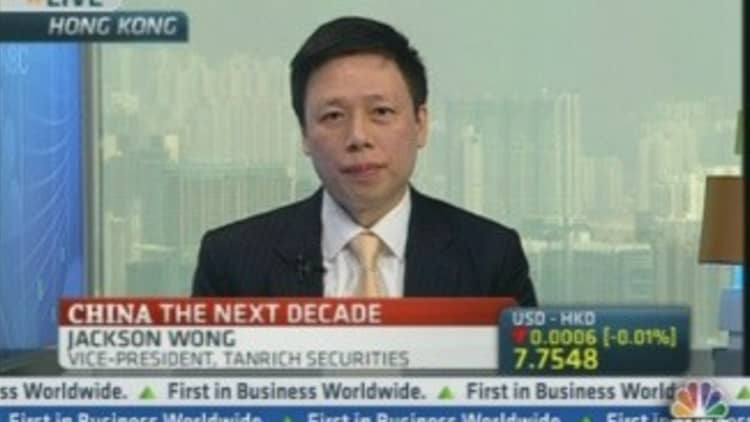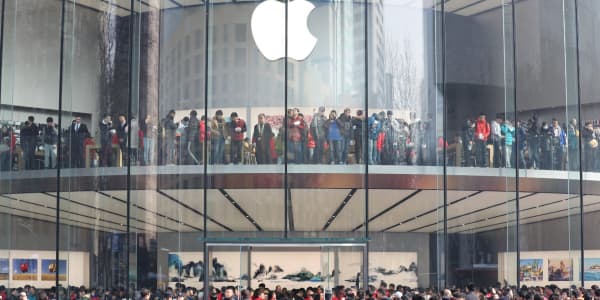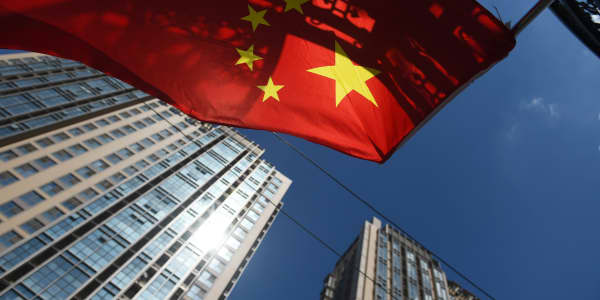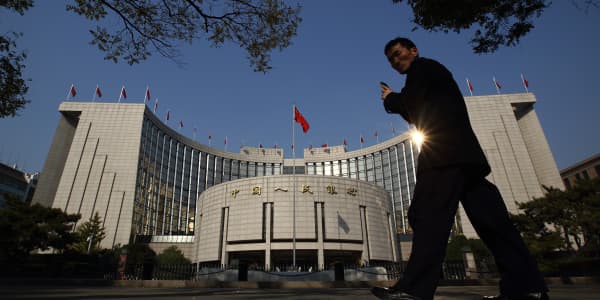It is likely to be tough, but China's new leadership needs to do less and not more if it wants to achieve its goal of delivering an economy driven by consumption rather than investment and exports, China watchers told CNBC.
The challenge for the new leaders — who will rule China for the next 10 years once they officially take over at the end of the parliament session — is to allow the economic shift to take place and resist the temptation to intervene and support growth via state spending.
"Part of what I would look for in a successful rebalancing of the economy is actually not doing anything and letting the adjustment happen," said Lombard Street Economist Freya Beamish.
And China, which has been growing at an average rate of 10 percent a year for the past three decades, has begun to show signs of that shift.
Latest data suggest consumption is playing a greater role in economic activity. It was the largest overall contributor to economic growth in 2012, accounting for 51.8 percent, while investment contributed 50.4 percent.
Still, consumption makes up only about 37 percent of China's gross domestic product, small compared with developed economies such as the U.S., where consumption makes up about 70 percent of gross domestic product (GDP). It's also below levels seen among Asian peers such as India,where consumption accounts for roughly 60 percent of GDP.
Outgoing Chinese Premier Wen Jiabao last week set out a reform plan with a focus on urbanization to boost consumption. China intends to spend $6.4 trillion to bring 400 million people into the cities over the next decade in a bid to turn China into a developed economy where growth is generated by an affluent consumer class.
Other measures such as a recent tightening of curbs on the housing sector are expected to help keep house prices affordable and boost domestic consumption.
(Read More: No US Style Crash in China Home Market: JPMorgan)
"There has been a mantra about increasing consumer spending and the consumer contribution to GDP for years but that's mostly been words," said Luca Sillipo, chief economist for Asia-Pacific at Natixis Global Asset Management. "We have seen some positive action such as the property measures. … If you can provide affordable housing and curb prices for young Chinese, they will consume and this is what they need to do, but recent steps are still just a drop in the ocean."Spending Power
Three decades of strong economic growth and rising incomes have helped lift spending by Chinese households, the signs of which are not hard to find. China overtook the U.S. as the world's largest auto market in 2009, while market research institute GfK says the demand for LCD TVs in China has tripled from 12 million units in 2008 to 36 million units in 2011.
Retailers from the likes of Wal-Mart Stores to fashion houses such as Prada and Hermes, meanwhile, have expanded rapidly in China on the consumption story.
"We still see lines outside Prada stores in both Hong Kong and China," said Jackson Wong, vice president at Tanrich Securities. "It's a good brand name and one which the growing middle class would love to buy."
China's urban residents saw their average per capita disposable income rise 9.6 percent in 2012, official data show. That growth was 1.2 percentage points higher than in 2011.
Economists said the consumption model is one that not only suits China's economic structure, but is in fact the way the economy is moving naturally.
(Watch CNBC Asia's new TV show "Inside China" on March 15)
Retail sales growth, another indicator of consumption, crept steadily higher in the second half of last year, dipping only slightly at the start of 2013. Retail sales, rose 12.3 percent in January and February year-on-year, compared with 15.2 percent in December.
The path to a consumption-led economy, however, is not an easy one.

"The good news is that Beijing understands the problems and the new leadership are concerned about the need to rebalance the economy," Michael Pettis, finance professor at Peking University told CNBC in February."The bad news is that many countries have tried this before and very few have been successful. It is a very difficult process."
Countries that have successfully rebalanced their economies in the last 100 years include South Korea and Taiwan, while those that have had very strong periods of investment-led growth and then stumbled include Brazil, according to Pettis, author of the book "The Great Rebalancing."
Big Concern
The big concern for economists is that China, which has become accustomed to high levels of growth,will resort to pumping in money into the economy if it slows too much,something that would delay the adjustment that is already taking place in the economy.
"They [Chinese policymakers] have talked about the need for rebalancing, but what we've seen so far is that if the economy slows then the government steps in with stimulus," said China economist Patrick Chovanec.
Take a look at what happened last year: China's economy grew 7.9 percent in the final three months of 2012, breaking seven quarters of slowing growth after the government ramped up investment spending.
Fiscal stimulus measures taken by Beijing last year included a $150 billion-plus infrastructure spending package and incentives for exporters.
But a dependence on investment spending, about 50 percent of China's GDP, has led to overcapacity in the industrial sector, harming the economy's efficiency despite low labor costs.
"In terms of the rebalancing story, for investment levels to come down we need to see lower growth for a period of time," said Beamish at Lombard Research in Hong Kong.
And despite putting an emphasis on promoting consumption as the key to future growth at this month's National People's Congress, the government said it would target fixed asset investment at 18 percent in 2013 versus 16 percent last year. 100520497
(Watch: Inside China on CNBC TV)
Going Slow
Economists say that for China to successfully re-orientate its economy, Beijing will need to tolerate lower levels of growth, possibly rates of 5 percent or less.
"The rebalancing will take place, it's just a case of time and how much the new leadership is prepared to let growth weaken to. So if growth slows to 3-4 percent, then that implies a more painful adjustment. And the longer they put it off, the more painful the adjustment will be," said Chovanec.
Slower growth rates are not necessarily a bad thing, and many still see opportunities in a China that is not growing at red-hot pace. A country that is home to a billion plus consumers is just too big to ignore.
"Even if China slows down, so it doesn't grow at 9 percent,it grows at 7 percent. That's still an incredible amount of growth in a huge market," John Scully, a former CEO of Apple, told CNBC. "So for someone like Apple or Samsung who are selling smartphones they can do very well in a 7 percent growth market."
Beamish says the change taking place in the Chinese economy is not one that can be held back for too long.
"The adjustment will have to come. Whether that happens in a successful way or not is the main question," she said.
- By CNBC.Com's Dhara Ranasinghe, Follow her on Twitter: @DharaCNBC





